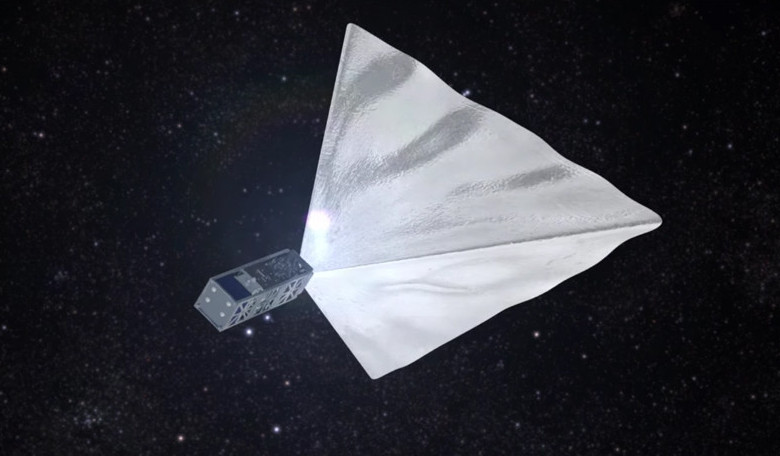Venus is about to get knocked down the list of the brightest objects seen in the night sky, and in its place will be Mayak – a crowdfunding-financed satellite developed and recently launched from Russia.
Mayak is a 3U Cubesat-standard microsatellite that measures only 10×10×30 centimetres in size, not so bright then you might be thinking? However, tucked away in these tiny dimensions is a giant pyramid-shaped sail that is designed to reflect the Sun once unfurled. Made of Mylar and stated to be 20 times thinner than human hair, the sail will span 16 square meters (170 square feet) when it is soon deployed.
Based on pre-flight analysis, Mayak – which is Russian for Lighthouse or beacon – will reach an optical magnitude of -10 at the beginning of the flight. For comparison, the brightest Iridium flares can reach a magnitude of -8, while on a good day, the Space Station can reach -4. Even though you shouldn’t have trouble spotting it, backers of the project will be able to monitor its location with an app on their phone created especially for the project.
But aside from lighting up the night-sky, the people behind Mayak say that the satellite is not just a gimmick to attract attention to space, but that it also has two important scientific goals; to be used as a reference to verify the calculations of the apparent stellar magnitude of space objects, along with providing information about the air density at high altitude. Plus it is also testing an aerodynamic brake device, which in the future may be used to remove space debris from orbit.
Consequently, these science missions will mean that Mayak will only remain visible for about a month in the night sky, however there is a chance it could shine brighter for longer if it’s orbit does not properly degrade as anticipated.
The project, which cost around 5 million rubles (around $84480.00 and £64818), was conceived 3 years ago by Sasha Shaenko, the Head of the educational program at the Moscow Polytechnic University. It was built with funds secured through the Boomstarter crowdfunding site, with additional help from the aptly named RocketBank and it took a year and half to build after the approval of the draft project.
There has been concerns already that the brightness of the satellite could pose a problem for astronomical observation such as all-sky surveys, which monitor the entire sky, but as of yesterday its actual brightness has yet to be reported.











